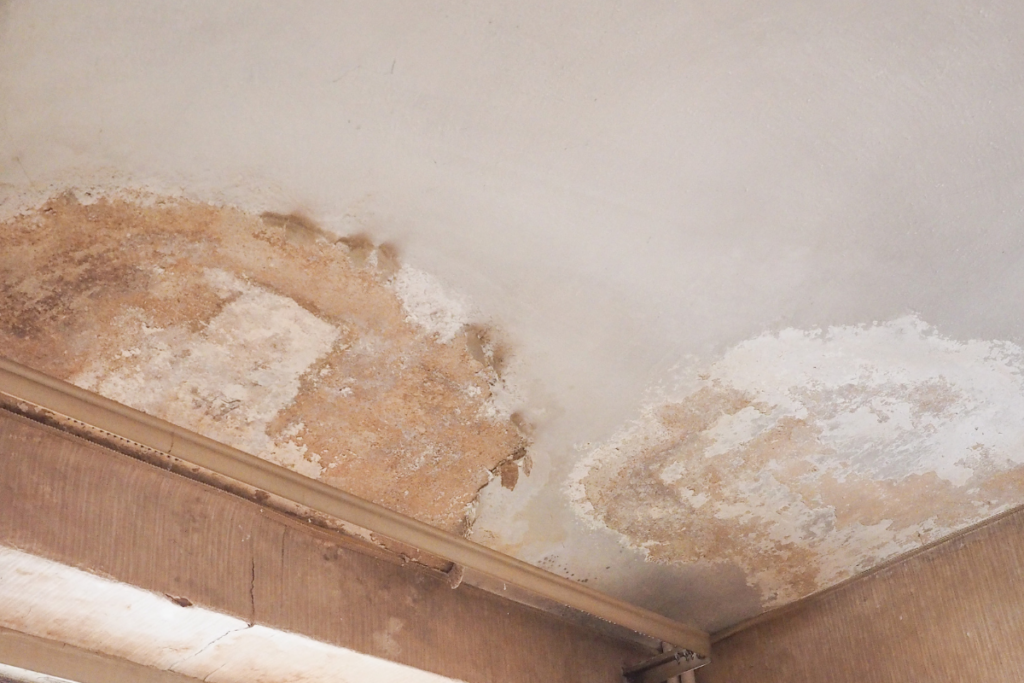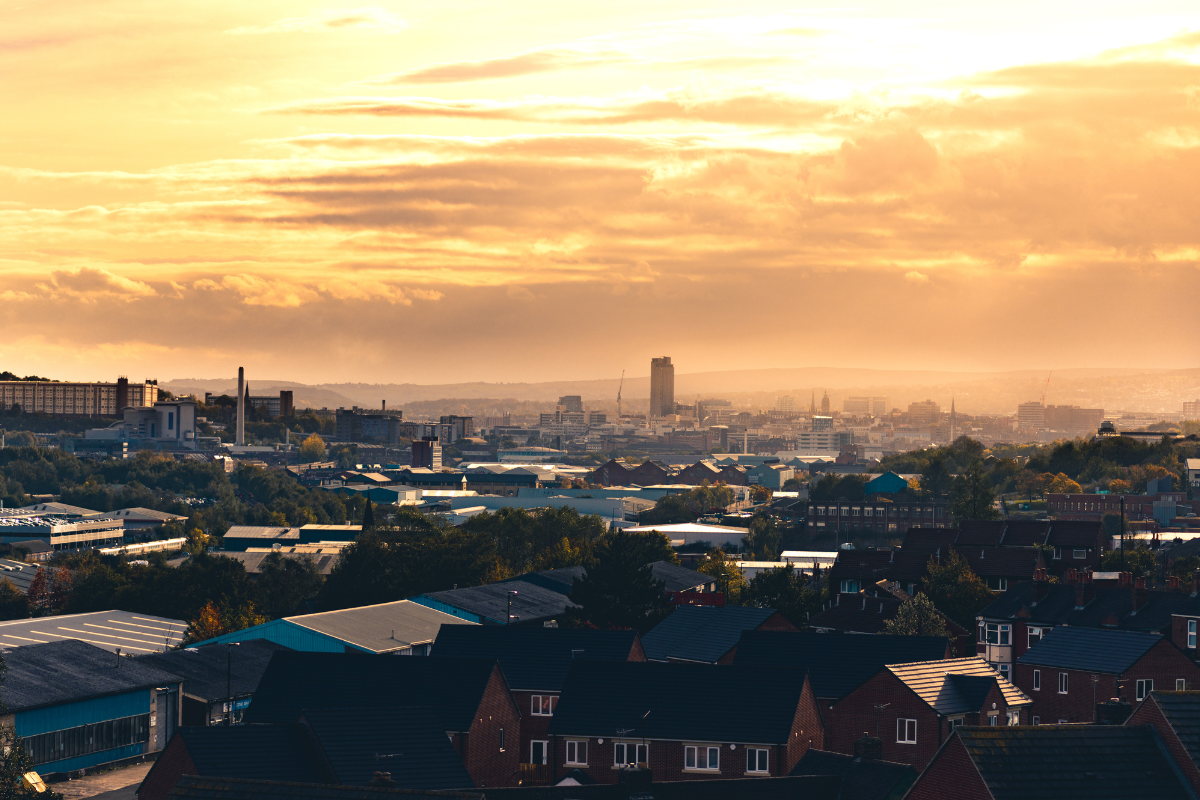Damp in buildings is a widespread and often underestimated problem that can lead to a variety of issues for property owners and occupants. Aside from causing unsightly marks and unpleasant odours, damp can also contribute to structural deterioration, reduced energy efficiency, and adverse health effects for those living or working in affected environments. With these potential consequences in mind, it’s crucial to understand how damp manifests in the home and the appropriate remedies. Read more about what to do about 7 different types of damp that commonly occur, from how to spot them to how to fix them.
What causes damp in houses?
Unfortunately, dampness is a common occurrence for many UK homeowners and landlords. It’s a serious problem, which can accelerate chronic health conditions like asthma and damage the fabric of buildings. The good news is that in most cases, it’s pretty easy to fix.
Common types of damp such as condensation occur when warm moist air contacts a cold surface and condenses. It can also happen in hidden wall spaces, floor cavities or roofs, causing structural damage and mould growth. It’s caused by daily activities such as washing, bathing or cooking, which can add as much as four pints of water into the air. New homes tend to suffer more as they’re well-sealed and can’t breathe as much as traditional properties.
Inadequate heating is another cause. As warm air holds much moisture, this condenses on cooler surfaces, which can be made worse when heating fluctuates frequently.
Another leading cause is inadequate ventilation. Homes that allow good airflow enables moisture-laden air to escape. However, poorly ventilated homes allow warm air to condense on cold surfaces, typically windows and external walls.
Other types of damp like rising damp come from groundwater rising, or moisture penetrating a building’s structure – typical in older buildings and affecting upstairs rooms as water moves horizontally. This can happen due to poor outside render or blocked gutters, which can damage a building’s structure and saturate cavity wall insulation, prolonging the issue even more.
Finally, building faults are common reasons damp can happen, like cracks in masonry, mortar joints, or render. However, plumbing leaks or too highly elevated ground levels can also be to blame.
What are the different types of damp?
Below are seven of the most common types of damp found in homes today. From how to spot the signs to their main causes and treatments, find out about damp and mould in different properties.
1. Rising Damp
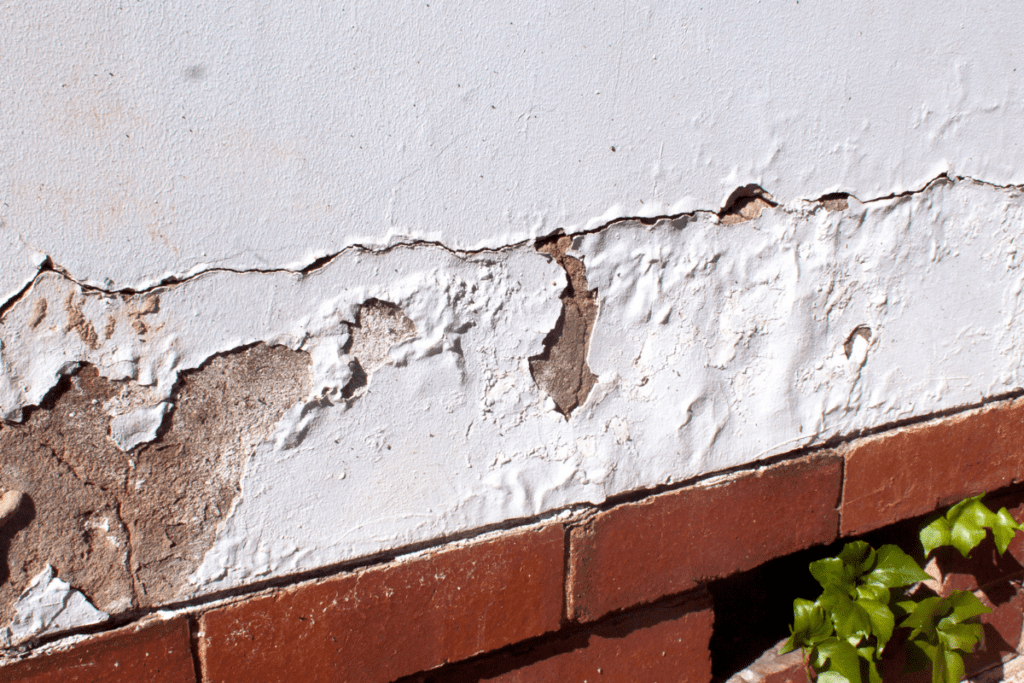
Rising damp occurs when groundwater is absorbed by porous materials, such as brick, stone, or mortar, and rises through the building structure. It’s a common type of damp, and one of the most common issues surveyors find in building surveys.This type of damp typically affects the lower areas of walls and is characterised by a “tide mark” and damp or wet patches.
What to do:
- Install a damp-proof course (DPC) to create a barrier that prevents moisture from rising. This can be done using a chemical injection, or by inserting a physical DPC layer, such as a plastic or slate membrane.
- Improve drainage around the property to prevent water buildup near the foundations.
- Seek professional assistance if you’re unsure about the best course of action for your specific situation.
2. Penetrating Damp
Typically caused by water seeping through external walls, roofs, or around windows and doors, penetrating damp is very common. There are two types of penetrating damp: direct penetrating damp and lateral penetrating damp.
Direct penetrating damp typically results from defects in a building’s external envelope, such as failed weatherproofing materials or damaged or missing drip details. Drip details are grooves beneath sills designed to prevent rainwater from reaching the junction of the sill and wall. Penetrating damp can also occur due to cracks in masonry or faulty roof coverings.
Lateral penetrating damp often affects old solid walls when external ground levels have risen over time. In the UK, buildings are constructed with external ground levels at least 150mm below the damp-sensitive internal fabric to keep elements like skirting boards, internal plaster, and timbers out of the rain splash zone. Rainwater can splash up to 150mm on hard surfaces, increasing the wall base’s exposure to moisture. Old solid walls, due to the breathable materials used in traditional construction, can resist dampness from reaching internal building fabric as long as this 150mm distance is maintained.
What to do:
- Inspect the exterior of your property for signs of damage, such as cracked bricks, gaps in mortar, or missing tiles.
- Repair or replace damaged materials to prevent further water infiltration.
- Ensure windows and doors are properly sealed with suitable weather stripping.
- Regularly clean gutters and downpipes to ensure effective drainage.
3. Condensation
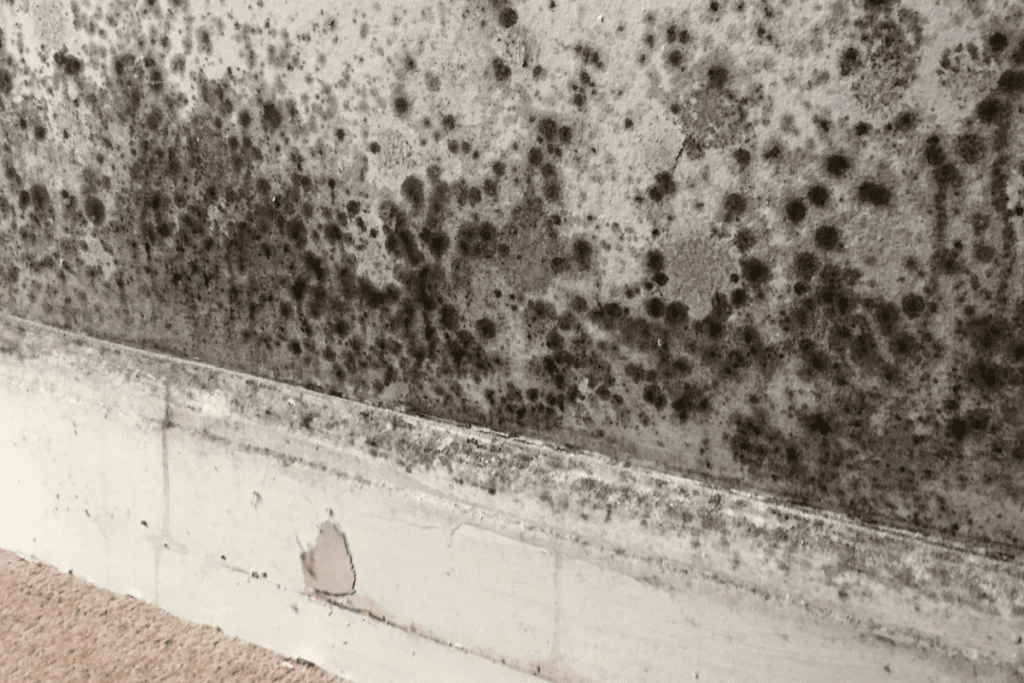
This is the most common form of damp and is caused by excess moisture in the air. When warm, moist air comes into contact with cold surfaces, such as windows or walls, it cools and condenses into water droplets. If not properly managed, this can lead to mould growth and structural damage.
Condensation can develop on both the exterior and interior of building materials. When it occurs within the building fabric, it is referred to as interstitial condensation. This type of condensation can remain hidden until it appears on a surface, often leading to misdiagnosis as another form of dampness.
What to do:
- Increase ventilation in your home by opening windows, using exhaust fans in kitchens and bathrooms, or installing trickle vents.
- Maintain a consistent indoor temperature by using heating and insulation.
- Use a dehumidifier to help remove excess moisture from the air.
- Wipe away condensation from windows and other surfaces regularly to prevent mould growth.
4. Hygroscopic Damp
When moisture is absorbed from the atmosphere by materials that are naturally hygroscopic, such as wood, plaster, or brick, this can cause hygroscopic damp. This type of damp is often associated with high levels of humidity and can lead to mould growth and structural damage.
What to do:
- Address any sources of excessive humidity, such as poorly ventilated bathrooms, kitchens, or laundry rooms.
- Use a dehumidifier to help control indoor humidity levels.
- Properly insulate and ventilate your property to maintain a stable indoor temperature and reduce the likelihood of condensation.
5. Plumbing Leaks and Damp
Plumbing issues can become damp issues when water from faulty pipes, joints, or fixtures seeps into the building structure. This can occur in both visible and hidden areas, making it crucial to regularly inspect and maintain your plumbing system. A faulty drainage may also cause damp, caused in broken pipes underground.
What to do:
- Regularly inspect your plumbing system for signs of leaks, including damp patches, water stains, or mould growth.
- Check for increased water bills or reduced water pressure, as these can also indicate a hidden leak.
- Repair or replace any faulty plumbing components as soon as possible to prevent further water damage.
- In cases of severe or persistent leaks, consider hiring a professional plumber to identify and address the issue.
- If you suspect a faulty drainage system underground, RICS advise a closed-circuit television (CCTV) system to identify leaking underground pipes.
6. Construction Moisture
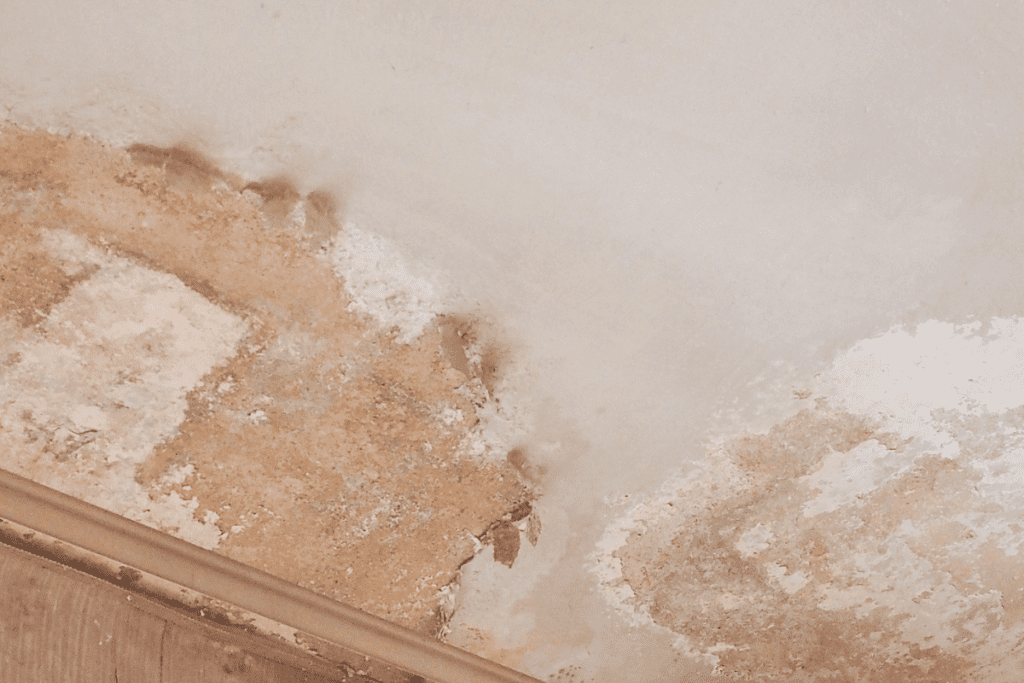
Construction moisture refers to the dampness that can be present in newly built or renovated properties due to the use of water-containing materials, such as concrete, plaster, or paint. As these materials dry and release moisture, the excess humidity can lead to damp issues if not properly managed.
What to do:
- Ensure adequate ventilation during and after the construction or renovation process to allow moisture to escape.
- Monitor humidity levels in the building, and use dehumidifiers if necessary to help control excess moisture.
- Allow sufficient drying time for water-containing materials before sealing or covering them with finishes or furnishings.
- Consult with building professionals to ensure proper moisture management practices are in place during construction or renovation.
7. Groundwater and Flooding Damp
In the UK, we experience lots of rain, so we need to know about Groundwater and flooding damp. It occurs when excess water from heavy rainfall, high water tables, or nearby bodies of water infiltrates a building’s structure. This type of damp can cause significant damage to foundations, walls, and flooring materials, as well as promote mould and mildew growth.
Read more about how to remedy damage to timber here.
What to do:
- Assess the property’s drainage system to ensure water is effectively channeled away from the building.
- Consider installing a sump pump or French drain system to mitigate groundwater and flooding risks.
- Elevate sensitive components, such as electrical systems and appliances, to minimise damage in case of flooding.
- If your property is located in a flood-prone area, invest in flood-resistant construction techniques and materials, and consider purchasing flood insurance.
Dealing with damp in your property is essential to maintain its structural integrity and ensure a healthy living environment. By identifying the type of damp you are dealing with and taking appropriate action, you can prevent further damage and protect your home. If you are unsure about the best course of action or require professional assistance, consult a qualified building surveyor or damp specialist for advice. Furthermore, if the damp has been around for a while or is significant, it’s worth contacting a damp surveyor to ensure it doesn’t create any health issues or damage to the property.
If you suspect damp, get in touch with CJ Bloor today.

